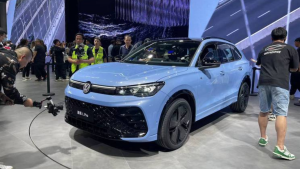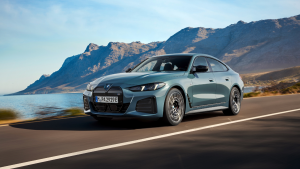Move over
Much has been said about Hyundai's new fluidic sculpture design language so I won't go there except it's hard to write anything about the new Verna without touching on the way the car looks. For everything that the old Verna had, the one thing it patently did not was style (made even worse by the end of life face-lift) and that's the most radical departure on the new car. No longer will the term 'Korean cars' be applied in a derogatory way; the new Verna exorcises the ghosts of the past by donning properly appealing and genuinely stylish sheet metal. That's half the battle won.
The other half is the diesel engine which you will have read about earlier. In fact with petrol prices going up by another five bucks and the day when petrol could touch 100 bucks not being that far away, it's safe to say that without a diesel engine (or two) you might as well get on with digging your own grave.
Except the City has made do with only a petrol engine (or two) for the past 13 years and still ruled the segment, only being knocked off its perch in the last two months by a combination of the Vento (and its diesel engine) and the production cuts (due to the earthquake and devastating tsunami in Japan). Nevertheless there's no denying that a petrol engine done well, in a car that's done even better, will find favour with the Indian buyer and if the Verna has to gain genuine respect, it has to best the best C-segment car in the country and play by its rules â" with a petrol engine. .
Engines then and the Verna starts strong by offering two petrol engines, the base 1.4-litre (also seen in the i20) with 107PS and the 1.6-litre four-cylinder tested here with 123PS, up by 20PS over the old Verna. Both are from the all-new gamma series with the 1.6 getting twin overhead cams, variable valve timing on the intake side and is mated to a 6-speed manual transmission (and four-speed auto) while the City makes do with a 5-speed manual (though the auto also gets 5-speeds).
Performance? The Verna accelerates with far greater vigour and enthusiasm, hitting 100kmph in 11.93 seconds, 0.5 second quicker than before. The standing kilometre takes 33.28 seconds and it gets to a top speed of 197kmph. It also has a strong bottom end with good in-gear flexibility and with the tall sixth gear, fuel efficiency improves considerably to 11.1kmpl in the city and 18.7kmpl on the highway to deliver an overall figure of 12.99kmpl. A big step up then over the old Verna but Honda is still the master of the internal combustion engine and despite the City's iVTEC engine displacing (a lower) 1.5 litres and churning out 118PS, it still beats the Verna to 100kmph (taking 11.53 seconds). However, the tall final gear ratio in the Verna helps it edge out the City in terms of top speed and fuel efficiency. The City maxes out at 182kmph and posts a slightly lower 12.66kmpl overall.
Crucially where the iVTEC scores is in the feel of the engine. The Honda unit feels far more eager to rev and when it revs, it goes all the way up to 7000rpm (the Verna peaks at 6800rpm). It's a light, zippy and thoroughly rewarding engine if you want to have fun and is refined, relaxed and thoroughly effortless when you're stuck in traffic. The gearbox too is light and deliciously slick requiring just a flick of the wrist. Lightness, in fact, is the over-riding theme of the City â" it has been designed for the city and demands zero effort to be driven in the city.
The Verna too is effortless, apart from the gearbox requiring a firm shove (or maybe the car was just too new and tight), but therein lies a problem, the steering. Just like the i20, the Verna's steering is extremely light which makes parking a total breeze but get going and the lightness allied to the quick steering ratio poses big problems. This is one of the quickest steering racks around requiring very small inputs to switch lanes and while that might have been great in the city, the bigger problem is the woeful lack of feel. So you turn the wheel, never know how much you've turned it, realise you've turned too much, correct, then over correct⦠get the picture? In time you get used to it but you never have confidence, and this sensation is heightened at speed. In fact on our top speed runs, both car and tester were distinctly nervous and the run was attempted only once. The brakes are very good though â" disc brakes all around ensure retardation distances and times are very competitive â" but they feel wooden and lack feel. ABS is standard across the range which is a good move.
The city is a more natural environment for the Verna where its excellent NVH and well damped ride come to the fore. Noise suppression is so good that the engine is barely audible in normal course and unlike the Honda that gets rather loud when revved hard, the Hyundai remains admirably silent and unobtrusive even when worked hard. The suspension damping is also good, a typical Hyundai trait that, and even over large potholes the suspension refuses to crash and shudder audibly.
Which is exactly what the City does. That sense of lightness is all pervasive, down to the suspension feeling a bit fragile and crashing audibly into potholes. It's also quite stiffly sprung and the ride is unsettled over typical concrete roads. The steering too is light and not exactly bursting forth with feel which takes some getting used to on the highway when pushing her hard. Seriously, speed-sensitive power assist should be standard on both cars. However you always know what the front wheels are up to and that allows her to be pushed hard round corners. For all its lightness, the steering has good precision, making it good fun to chuck round corners and the chassis is inherently well balanced and composed. But there is a problem and that is the low rolling resistance tyres that are prone to understeer without much prodding and squeal in quite startling desperation. Better rubber would no doubt adversely impact fuel efficiency but would improve dynamics immeasurably.
The Verna gets fatter 16-inch rubber and that should give her better cornering grip but the suspension is soft and there is quite a load of body roll. And when she starts to understeer, quite enthusiastically at that, there is no feel in the steering to address the situation. The previous gen Verna wasn't an enthusiast's car and though this one has improved, it still isn't one to chase corners with. In any case that's not what either car was designed for â" they're primarily city transport so let's see how they fare in the city.
The wheelbase of the Verna has gone up by 70mm to 2570mm which liberates more room inside the cabin and like the exteriors the interiors too are extremely stylish. The sweep of the dash, the door pads (styled with more effort that anything I've seen), materials, cool white backlighting for the dials (though the blue glow from the stereo can get very distracting), fabrics, trim â" everything marks a huge step up. The City patently cannot compete on this front and though the steering wheel from the Civic is a saving grace, the rest of the cabin can't hold a candle to the Verna. The City, and I know we've said it many times, doesn't even have a stereo (making do with only a USB input) whereas, for the same price, the Verna gets an integrated stereo with USB, aux, iPod and Bluetooth connectivity along with Bluetooth audio. And that's just the tip of the iceberg â" six airbags (City has two), keyless entry, keyless ignition, parking sensors with a parking camera in the rear view mirror, comprehensive trip computer â" the list is endless.
So is it back to the drawing board for Honda? Well, that nasty silver finish centre console has to go, and the feel of the materials has to go up and there has to be more sound deadening but otherwise the Honda's cabin is actually a better place to be in. For starters there's more space â" rear knee room is more, shoulder room is more making three abreast at the rear comfortable, the cabin feels more airy and spacious (because of the sloping rear roofline the Verna is a bit closed-in), the seats are higher so you sit erect and more comfortably (the Verna's rear seat has a lower hip-point which compromises comfort over long runs) and you walk into the car (whereas you crouch into the Verna). Get behind the wheel and in the City there is space to move your elbows whereas in the Verna your elbows bang against the door pad and the centre console closes in the driver. The driver's seat of the City is also wider and more comfortable.
Despite all the compromises and the lack of equipment, the City's is still the nicer cabin to be in. And despite the Verna upping its game significantly, the City is still the better car. That said, I also have no doubt that the Verna will eat into the City's pie, particularly with its exhaustive equipment list (four engines and ten variant are unprecedented), but if Honda ever needed a sign that its bread-and-butter was under threat, this is it.
Related Stories
Top Stories
Latest Videos
Most Popular
- Budget Sportbike Showdown: Kawasaki Ninja 500 vs Aprilia RS 457 vs Yamaha YZF-R3
- 2014 Triumph Daytona 675 vs 2024 Kawasaki ZX6R - A Decade of Evolution in Supersport Motorcycles
- Mumbai-Pune Expressway speed restrictions updated
- Bajaj NS400 picture leaked ahead of its launch
- Nissan Magnite EZ-Shift review - is the AMT any good?











